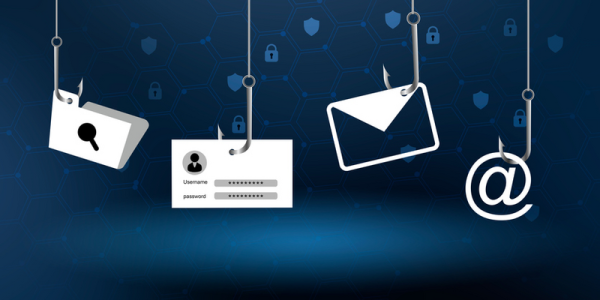Data Privacy and You

Person with magnifying glass (We Are, Getty Images)

Person with magnifying glass (We Are, Getty Images)
How does this align with my curriculum?
| Grade | Course | Topic |
|---|
Students will learn about data privacy and how to keep their personal data safe online.
Overview
| Activities | Timing | Student grouping | Description |
|---|---|---|---|
| Minds-On: Activating Knowledge and Understanding | 15-20 minutes | Large group | Students will share what they know and want to know about data privacy. |
| Action: Jigsaw Activity | 20–25 minutes | Small group | Students will use a Jigsaw learning strategy to develop questions for a quiz game |
| Consolidation: Applying Learning Using Technology | 20-30 minutes | Large Group | Students will play a quiz game using questions they created themselves. |
This lesson can be done over a few days.
Students will:
- Understand what is meant by data privacy
- Understand the importance of keeping personal data safe online
Learning Goals
Students will:
- Understand what is meant by data privacy
- Understand the importance of keeping personal data safe online
Students can:
- Identify some ways in which online data can be compromised
- Identify some ways in which personal data can be kept safe online
Success Criteria
Students can:
- Identify some ways in which online data can be compromised
- Identify some ways in which personal data can be kept safe online
This icon indicates potential assessment opportunities.
Observations
- Observe how students respond to the video, “Teach Students About Internet Safety and Privacy”. Note if the content is new for students or if there are connections they are already making.
- Listen and observe “expert” group conversations as students develop their Kahoot questions.
Conversations
- Record different questions or ideas that students raise in relation to the video.
- Listen and observe “expert” group conversations as students develop their Kahoot questions.
Products
- KWL Chart
- Kahoot questions generated
Evidence of Student Learning
This icon indicates potential assessment opportunities.
Observations
- Observe how students respond to the video, “Teach Students About Internet Safety and Privacy”. Note if the content is new for students or if there are connections they are already making.
- Listen and observe “expert” group conversations as students develop their Kahoot questions.
Conversations
- Record different questions or ideas that students raise in relation to the video.
- Listen and observe “expert” group conversations as students develop their Kahoot questions.
Products
- KWL Chart
- Kahoot questions generated
Students will:
- Understand what is meant by data privacy
- Understand the importance of keeping personal data safe online
Learning Goals
Students will:
- Understand what is meant by data privacy
- Understand the importance of keeping personal data safe online
Students can:
- Identify some ways in which online data can be compromised
- Identify some ways in which personal data can be kept safe online
Success Criteria
Students can:
- Identify some ways in which online data can be compromised
- Identify some ways in which personal data can be kept safe online
This icon indicates potential assessment opportunities.
Observations
- Observe how students respond to the video, “Teach Students About Internet Safety and Privacy”. Note if the content is new for students or if there are connections they are already making.
- Listen and observe “expert” group conversations as students develop their Kahoot questions.
Conversations
- Record different questions or ideas that students raise in relation to the video.
- Listen and observe “expert” group conversations as students develop their Kahoot questions.
Products
- KWL Chart
- Kahoot questions generated
Evidence of Student Learning
This icon indicates potential assessment opportunities.
Observations
- Observe how students respond to the video, “Teach Students About Internet Safety and Privacy”. Note if the content is new for students or if there are connections they are already making.
- Listen and observe “expert” group conversations as students develop their Kahoot questions.
Conversations
- Record different questions or ideas that students raise in relation to the video.
- Listen and observe “expert” group conversations as students develop their Kahoot questions.
Products
- KWL Chart
- Kahoot questions generated
Materials and Preparation
| Material/Technology/Setting | Quantity |
|---|---|
|
1 per student |
|
1 per group |
|
For teacher use |
Materials
| Material/Technology/Setting | Quantity |
|---|---|
|
1 per student |
|
1 per group |
|
For teacher use |
- Before beginning the lesson, familiarize yourself with the resources and videos that the students will use.
Preparation
- Before beginning the lesson, familiarize yourself with the resources and videos that the students will use.
- None. This is an introductory lesson.
Student Prior Knowledge and Skills
- None. This is an introductory lesson.
| Material/Technology/Setting | Quantity |
|---|---|
|
1 per student |
|
1 per group |
|
For teacher use |
Materials
| Material/Technology/Setting | Quantity |
|---|---|
|
1 per student |
|
1 per group |
|
For teacher use |
- Before beginning the lesson, familiarize yourself with the resources and videos that the students will use.
Preparation
- Before beginning the lesson, familiarize yourself with the resources and videos that the students will use.
- None. This is an introductory lesson.
Student Prior Knowledge and Skills
- None. This is an introductory lesson.
Teaching and Learning Activities
This icon indicates potential assessment opportunities.
Minds-On: Activating Knowledge and Understanding [15-20 min.]
| Instructions | Teaching Tips |
|---|---|
|
To begin, use a KWL or similar learning strategy to activate prior knowledge in your students. This will allow them to articulate what they already know about data privacy and what they want to know about data privacy. |
DiscussionsDiscussion prompts can include:
|
|
Show students the video Teach Students About Internet Safety and Privacy (4:00 min.) As you play the video, pause at various points to allow students the opportunity to add the information they are learning to their KWL chart. |
Images and VideosYou may wish to show the video with closed captioning displayed. |
Did you know?
Personal information is information about an identifiable individual. It can include your name, birthday, email address, and phone number. It can also include your opinions, your spending habits, your IP address, photos and digital images, and your email and text messages (Source: MediaSmarts.ca)
Action: Jigsaw Activity [20–25 min.]
| Instructions | Teaching Tips |
|---|---|
|
Introduce the jigsaw activity by telling the students that they will each receive weblinks to content about data privacy. Divide the class into groups of 4-5 students to form 'expert groups'. Each group selects (or is assigned) a topic from the Data Privacy Resources reproducible [Google doc] [Word doc] [PDF] to learn about and become 'experts' in a certain aspect of data privacy. The 'expert groups' should develop three questions on the topic to be used in a Kahoot! quiz game. Redistribute the class into ‘teaching groups’. A teaching group is a group composed of experts from different topic groups. Each 'expert' takes a turn to teach other members of the group about their topic, then asks the three questions they developed. Enter the questions designed by students in the jigsaw activity into the spreadsheet template provided by Kahoot! This tool allows the questions to be easily uploaded into a Kahoot!. |
TechnologyKahoot! is a game-based learning platform that makes it easy to create, share and play learning games or trivia quizzes. This game system is not free to use, but many schools and school boards/districts have licences. If you do not have access to Kahoot!, put the student questions into another free multiple choice game generator, or provide it on paper. IdeaFor a shorter version of this activity, have student groups obtain information from the Let’s Talk Science backgrounder Introduction to Cybersecurity. |
Consolidation: Applying Learning Using Technology [20–30 minutes]
| Instructions | Teaching Tips |
|---|---|
| Students play the Kahoot! game using the questions designed by the students. This should take about 25 minutes. |
IdeaYou may also want to include questions from the Additional Data Privacy Kahoot! Questions [Google doc] [Word doc] [PDF] |
Background Information for Teachers
What is Happening?
During the activity, students may encounter knowledge that is new to them. For example, a student may share a story about how they recently received an email that appears to be from their bank, asking for personal information. You can use this story to discuss the importance of being cautious when sharing personal information online and the risks of phishing scams.

Image - Text Version
Shown is a colour illustration of four white icons floating against dark blue. Each icon is pierced with a curved silver fish hook. The background is dark blue with tiny lock and badge shapes arranged to resemble bubbles. Starting on the left, the first symbol is a file folder with a black magnifying glass on the front. The second is a white identity card with a portrait of a person on the left, and rows of text below. The third is a blue envelope with a white flap. The final icon is a white at sign.
In order to be safe online, all Canadians should be aware of the rules and regulations regarding online data privacy in Canada. Knowing This information, and being cybersafe protects individuals from becoming victims of cybercriminals. If individuals learn to limit the risk of their data being accessed through websites, social media channels, chats, etc., they can protect themselves from losing control of their private and confidential information.

Image - Text Version
Shown is a colour illustration of three people smiling at smartphones, with wifi symbols, conversation bubbles and tall buildings in the background. The three black and white photographs of people appear cut out from another image. Behind these, white wifi symbols and multicoloured conversation bubbles float in a dark blue sky. On each side, bright pink apartment or office towers stretch from the bottom to near the top of the image.
Additional Resources
Reproducibles
- Data Privacy Resources reproducible [Google doc] [Word doc] [PDF]
- Additional Data Privacy Kahoot! Questions [Google doc] [Word doc] [PDF]
Videos
Reproducibles and Media
Reproducibles
- Data Privacy Resources reproducible [Google doc] [Word doc] [PDF]
- Additional Data Privacy Kahoot! Questions [Google doc] [Word doc] [PDF]
Videos
Literacy
- Students could create brochures about privacy guidelines that they find interesting and share them with the class.
Visual Arts
- Students could create and hang posters in the school about ways for students to protect their data online.
Career Education
- Students could explore different jobs done by people who work in the data privacy industry.
Digital Literacy
- Students could host a data privacy information night or lunch & learn at their school.
- Students could Take the Get Cyber Safe Checkup to find out how safe their data is online.
Extensions
Literacy
- Students could create brochures about privacy guidelines that they find interesting and share them with the class.
Visual Arts
- Students could create and hang posters in the school about ways for students to protect their data online.
Career Education
- Students could explore different jobs done by people who work in the data privacy industry.
Digital Literacy
- Students could host a data privacy information night or lunch & learn at their school.
- Students could Take the Get Cyber Safe Checkup to find out how safe their data is online.
Get Cybersafe.ca
This website from the Government of Canada has additional information, resources, downloadables, interactives, and publications on cybersafety.
Privacy Rights of Children and Teens
This lesson from MediaSmarts.ca helps students explore legal and consumer rights, evaluate online platforms and services, learn about Canadian laws that oversee privacy concerns, and how to make a privacy complaint in Canada.
Learn More
Get Cybersafe.ca
This website from the Government of Canada has additional information, resources, downloadables, interactives, and publications on cybersafety.
Privacy Rights of Children and Teens
This lesson from MediaSmarts.ca helps students explore legal and consumer rights, evaluate online platforms and services, learn about Canadian laws that oversee privacy concerns, and how to make a privacy complaint in Canada.
Government of Canada (June 26, 2023) Get Cyber Safe.
References
Government of Canada (June 26, 2023) Get Cyber Safe.
Reproducibles
- Data Privacy Resources reproducible [Google doc] [Word doc] [PDF]
- Additional Data Privacy Kahoot! Questions [Google doc] [Word doc] [PDF]
Videos
Reproducibles and Media
Reproducibles
- Data Privacy Resources reproducible [Google doc] [Word doc] [PDF]
- Additional Data Privacy Kahoot! Questions [Google doc] [Word doc] [PDF]
Videos
Literacy
- Students could create brochures about privacy guidelines that they find interesting and share them with the class.
Visual Arts
- Students could create and hang posters in the school about ways for students to protect their data online.
Career Education
- Students could explore different jobs done by people who work in the data privacy industry.
Digital Literacy
- Students could host a data privacy information night or lunch & learn at their school.
- Students could Take the Get Cyber Safe Checkup to find out how safe their data is online.
Extensions
Literacy
- Students could create brochures about privacy guidelines that they find interesting and share them with the class.
Visual Arts
- Students could create and hang posters in the school about ways for students to protect their data online.
Career Education
- Students could explore different jobs done by people who work in the data privacy industry.
Digital Literacy
- Students could host a data privacy information night or lunch & learn at their school.
- Students could Take the Get Cyber Safe Checkup to find out how safe their data is online.
Get Cybersafe.ca
This website from the Government of Canada has additional information, resources, downloadables, interactives, and publications on cybersafety.
Privacy Rights of Children and Teens
This lesson from MediaSmarts.ca helps students explore legal and consumer rights, evaluate online platforms and services, learn about Canadian laws that oversee privacy concerns, and how to make a privacy complaint in Canada.
Learn More
Get Cybersafe.ca
This website from the Government of Canada has additional information, resources, downloadables, interactives, and publications on cybersafety.
Privacy Rights of Children and Teens
This lesson from MediaSmarts.ca helps students explore legal and consumer rights, evaluate online platforms and services, learn about Canadian laws that oversee privacy concerns, and how to make a privacy complaint in Canada.
Government of Canada (June 26, 2023) Get Cyber Safe.
References
Government of Canada (June 26, 2023) Get Cyber Safe.